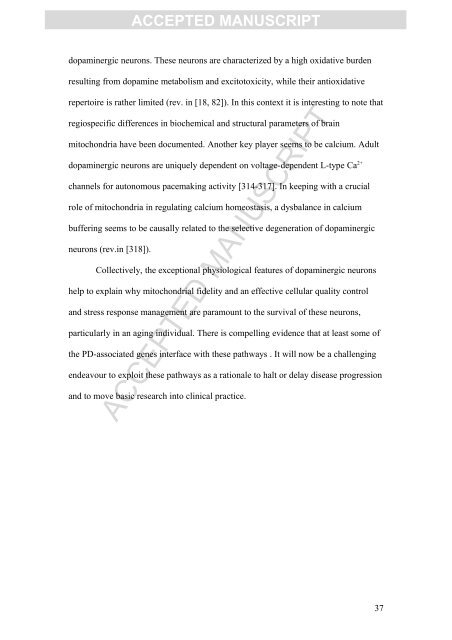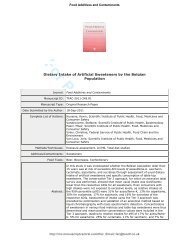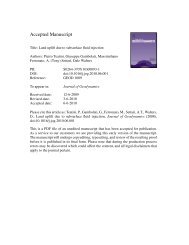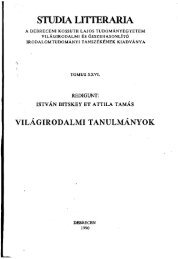accepted manuscript
accepted manuscript
accepted manuscript
Create successful ePaper yourself
Turn your PDF publications into a flip-book with our unique Google optimized e-Paper software.
ACCEPTED MANUSCRIPT<br />
dopaminergic neurons. These neurons are characterized by a high oxidative burden<br />
resulting from dopamine metabolism and excitotoxicity, while their antioxidative<br />
repertoire is rather limited (rev. in [18, 82]). In this context it is interesting to note that<br />
regiospecific differences in biochemical and structural parameters of brain<br />
mitochondria have been documented. Another key player seems to be calcium. Adult<br />
dopaminergic neurons are uniquely dependent on voltage-dependent L-type Ca 2+<br />
channels for autonomous pacemaking activity [314-317]. In keeping with a crucial<br />
role of mitochondria in regulating calcium homeostasis, a dysbalance in calcium<br />
buffering seems to be causally related to the selective degeneration of dopaminergic<br />
neurons (rev.in [318]).<br />
Collectively, the exceptional physiological features of dopaminergic neurons<br />
help to explain why mitochondrial fidelity and an effective cellular quality control<br />
and stress response management are paramount to the survival of these neurons,<br />
particularly in an aging individual. There is compelling evidence that at least some of<br />
the PD-associated genes interface with these pathways . It will now be a challenging<br />
endeavour to exploit these pathways as a rationale to halt or delay disease progression<br />
and to move basic research into clinical practice.<br />
ACCEPTED MANUSCRIPT<br />
37
















